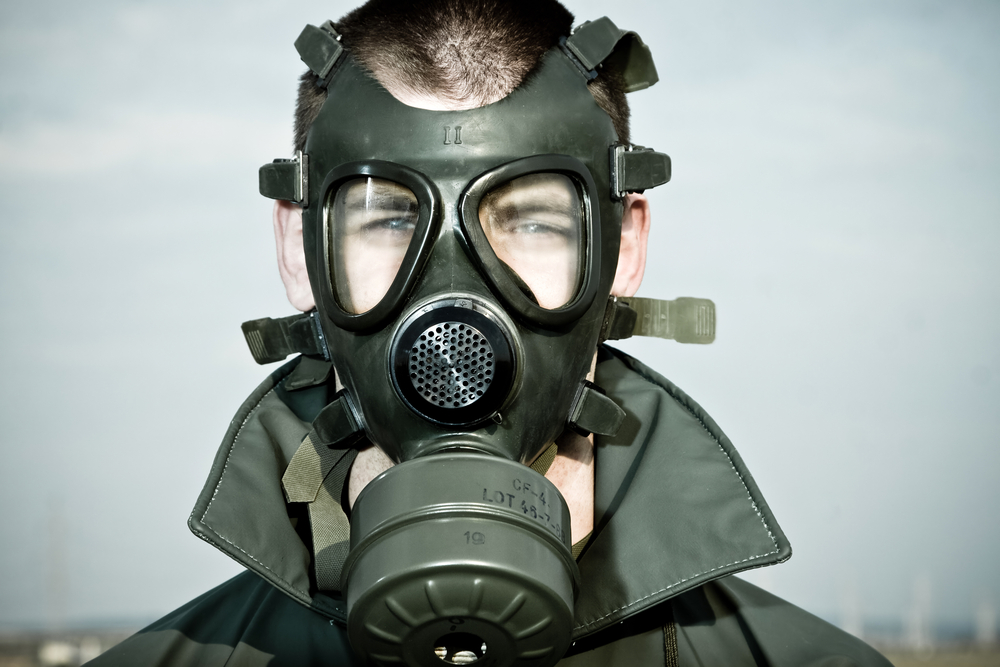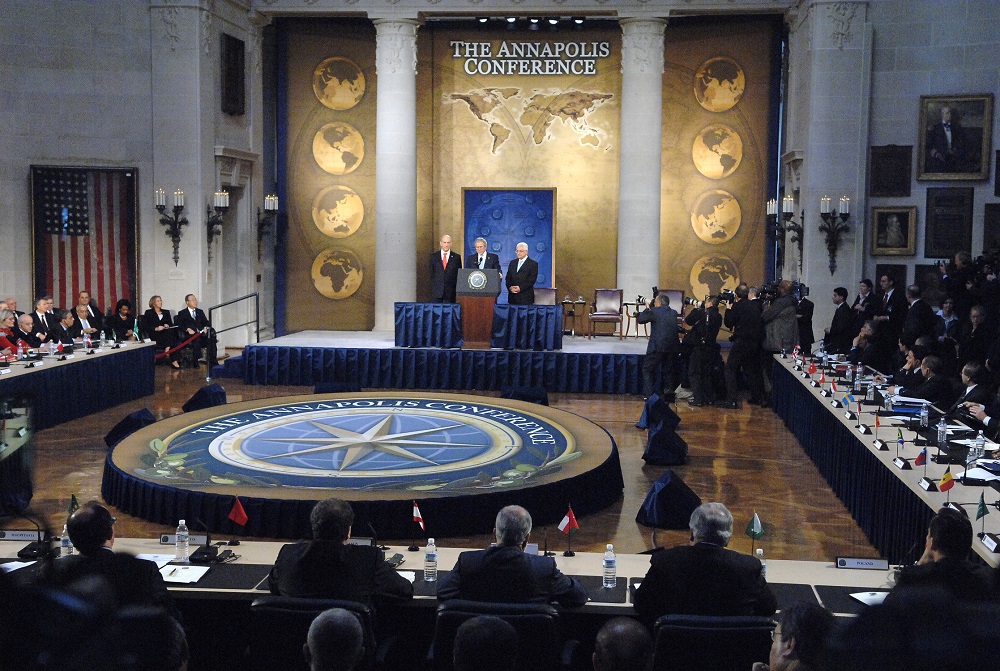America’s Bio-Terrorism Nightmare
The recent revelation from an American bio-defense analyst living in Europe that Syria is ready to respond with biological weapons of mass destruction if the U.S., Israel or Europe attack Iranian nuclear installations has again brought forth the reality that such weapons in the hands of our enemies represent an intolerable threat to our national security.
According to Jill Bellamy-Dorsey, who currently directs the Public Health Preparedness program for the European Homeland Security Association under the French High Committee for Civil Defense: ?Syria is positioned to launch a biological attack on Israel or Europe should the U.S. attack Iran. The Syrians are embedding their biological weapons program into their commercial pharmaceuticals business and their veterinary vaccine-research facilities?? she said. [1] Bellamy-Dorsey anticipates a variation of smallpox (cryptosporidium) as the biological agent Syria would use probably by infecting water supplies. Cryptosporidium is a one-celled parasite that causes a gastrointestinal illness with symptoms of diarrhea, abdominal cramps, headaches, nausea, vomiting, and a low-grade fever, the symptoms of which could last for weeks. The resulting mass illness would greatly inhibit the ability of any nation to defend itself. It is believed that the Syrians have tested their biological weapons in Darfur and that the Syrian military is planning the eventual integration of these weapons into its tactical and strategic arsenals by mounting biological warheads on its long-range surface-to-surface missiles and using them against military and civilian targets.
The Syrian revelation is only the latest in a long line of related warnings that have arisen in the West in recent years. Diseases such as SARS, AIDS, West Nile virus, hoof-and-mouth disease, and mad cow disease have highlighted the challenges of managing deadly pathogens in our shrinking world. But few are truly aware of the horrific nature of these weapons. The accidental release of anthrax from a military testing facility in the former Soviet Union in 1979 and Iraq’s admission in 1995 to having quantities of anthrax, botulinum toxin, and aflatoxin ready to use as weapons led President Clinton’s Secretary of Defense, William Cohen on November 25, 1997 to give a briefing on a Pentagon report dealing with the threat of chemical and biological weapons in the hands of then Iraqi dictator Saddam Hussein. After showing a picture of a Kurdish mother and her child who had been gassed by Saddam’s army in Halabja in March 1988, he stated: “One drop (of VX nerve agent) on your finger will produce death in a matter of just a few moments.? He then sketched an image of a massive chemical attack on an American city. Recalling Saddam’s use of poison gas and the Sarin gas attack in Tokyo, Cohen warned that “we face a clear and present danger today” and reminded people that the “terrorists who bombed the World Trade Center in New York had in mind the destruction and deaths of some 250,000 Americans that they were determined to kill.” Years later, a UN panel of experts found that the only thing holding al Qaeda back from using chemical and biological weapons was its lack of technical know-how, but the decision, it appears, has already been made to use chemical and biological weapons in future attacks. The CIA has said that an analysis of an al Qaeda document recovered in Afghanistan in the summer of 2002 “indicates the group has crude procedures for making mustard agent, Sarin and VX”, and could also attempt to build a cyanide-based chemical weapon using material readily available on the market.
As horrible as it was to have thousands of innocent Americans killed on September 11th, that is nothing compared to what terrorists could do with the biological and chemical weapons that we know they already possess. A mass-attack with Sarin, anthrax or some other biological agent could bring about civilian casualties and catastrophic damage to our country on a scale far beyond anything we experienced on September 11th, 2001. Experts cite the uncovering of several canisters of unidentified chemicals, possible residues of a ?tetanus virus-carrying chemical,? a bio-terror manual in a police raid on a Jemaa Islamiyah hideout in the southern Philippines and the recent discovery of a seven-pound block of highly-toxic cyanide salt in an al Qaeda safe-house in Baghdad believed to have been produced by Abu Musab Zarqawi, al Qaeda?s former ?poisons specialist.? These discoveries suggest that al Qaeda is developing a new generation of lethal biological weapons of mass destruction.
In one of the more sinister aspects of ?al Qaeda research,? Jamal Ahmed al-Fadl, a former Bin Laden associate testified during the U.S. trial on the 1998 embassy bombings in Africa that he himself had met with al Qaeda representatives and the Sudanese army where joint discussions were held in the early 1990s on the manufacture of chemical weapons to be mounted on artillery shells. Al Qaeda, at that time, had also been experimenting with biological weapons by gassing dogs with cyanide. Known as the “poor man’s atomic bomb,” these microscopic killers are easily made, easily dispersed and easy to transport though airports and across borders.
Nasser Asad al-Tamimi, an Islamic Jihad leader who died in 1998, said in Amman shortly before his death, that chemical and biological weapons were “the way to win the jihad.” Around the same time, former CIA Director James Woolsey cited reports that Hezbollah operatives had acquired chemical and biological weapons with the help of two Swiss businessmen and a captured Hamas activist Mohammed Salah, under interrogation in Israel in 1993, confessed that he and Moussa Abu Marzook, the then-head of Hamas operations in the U.S. had sought recruits in America with chemical and biological expertise. Steven Emerson, the maker of the film “Jihad in America,” (an expos’ of Islamic fundamentalist activities in the U.S.) told a Congressional hearing in February 1998 that after smashing a Hamas cell in Hebron in 1998, Israeli agents found computer records of plans to use chemical and biological agents to contaminate food and water.
Thus, long before the anthrax scare of 2001 made the threat real, U.S. officials were expressing concern over the implications of a terror cell in the U.S. unleashing a biological or chemical agent on American soil. The threat became even more sinister with the knowledge that Libyan dictator Muammar Ghadaffi had provided al Qaeda with chemical and biological weapons before changing heart and agreeing to destroy his own weapons program. U.S. forces invading Afghanistan in 2001 discovered and destroyed two production centers that were preparing to manufacture cyanide and the botulinum and salmonella toxins and possibly anthrax. Two terrorism manuals seized from al Qaeda operatives in several locations contained detailed instructions on making and using the toxin. One was found by British journalists in November 2001 at a deserted al Qaeda safe house in Kabul, Afghanistan; another was a 7,000 page manual titled, “The Encyclopedia of Jihad” which recommended the use of ricin as one of the “poisons that the holy warrior can prepare and use without endangering his health.? Since then, ricin-making equipment or traces of the toxin have been discovered during police raids on al Qaeda-affiliated cells in Britain, France, Spain, Russia, Georgia, and Kurdish-controlled northern Iraq. [2]
Deadlier by far than cobra venom, a speck of pure ricin the size of a pinhead can kill an adult if injected into the bloodstream. A slightly larger dose – roughly a pinch – is fatal if swallowed or inhaled. Ricin is water-soluble and virtually odorless, so it can be used to contaminate water or food supplies on a large scale. In 2002, 29-year-old Menad Benchellali, an al Qaeda ?chemist? was discovered to have set up a laboratory in his parents’ spare bedroom in Lyons, France and began to manufacture ricin. Today, exactly how many jars of ricin Benchellali may have produced – and their whereabouts – is an urgent question for European governments facing a wave of terrorist attacks and threats. Last year, similar containers turned up in Britain in the possession of North Africans who were allegedly planning an attack. At least one other jar is known to be missing, and French investigators suspect that still others exist.
But that was only the beginning of the nightmare scenario. On April 13, 2005, Kamel Bourgass, al Qaeda-trained Algerian, was convicted of plotting to launch chemical and bomb attacks in London and there have been other such planned attacks broken up by British intelligence since then. Police had raided Bourgass’s small flat in north London in January 2003 after receiving the tip-off in December 2002. Inside, they found recipes and the raw ingredients for making the deadly toxins ricin, cyanide and botulinum with instructions on how to make nicotine poison, rotting meat poison and potato poison and details on making explosives. There were also instructions explaining how to turn the poisons into gases with the detail that once gaseous, rotting meat poison was 1,000 times more deadly than nerve gas. Bourgass?s fingerprints were found on a cup containing apple seeds and paper containing cherry stones. Both can be used to produce cyanide. His fingerprints were also found on a bottle of acetone, which can be used to extract poison from the seeds as detailed in instructions found in the flat at Wood Green. The search also found more than twenty castor beans, the base ingredient for ricin. Bourgass and other British plotters were keeping the deadly ricin poison in a jar of skin cream and planned to smear it on the handles of cars and buildings in North London. Although police did not find the poison, they did find recipes to make it and that was enough to cause a national stir. [3]
These fears became reality on April 13, 2004. On that day, Bin Laden?s terror network targeted a Jordanian Military Intelligence installation, a luxury hotel, and the U.S. embassy in Amman, Jordan for its first poison gas attack designed to kill thousands of people. Fortunately, Jordanian security authorities intercepted one of the pickups loaded with the explosives and poison gas containers as it crossed from Syria into Jordan. Their cargoes of explosives combined with twenty tons of nerve and blister agents could have killed an estimated 80,000 people within a half-mile radius had the cargo detonated as planned. [4] The cell was later identified to be linked to Abu Musab al-Zarqawi, al Qaeda?s former terrorism ?contractor.?
With the knowledge that al Qaeda is also working to produce weaponized anthrax and other biological weapons, each moment that passes brings America or Europe closer to a national biological or chemical nightmare.[5] The Jordan episode sent shock waves through every Western capital. Warnings have been issued from the Director General of MI5 in Britain who spoke on the inevitability of such an attack in a Western city. It did not take long for the British to react. On April 22, 2004, Peter Hain, Leader of the House of Commons, told MPs that MI5 had issued a “clear intelligence” warning of the possibility of an anthrax or ricin attack on the heart of British democracy, and called on MPs to approve a permanent glass screen to prevent terror attacks on the chamber. Hain said, “If an al-Qaeda group managed to throw a phial of anthrax or ricin down into the chamber, or even worse a suicide agent released it without anybody noticing, which we have been advised is quite feasible, the particles would immediately begin spreading throughout the chamber.? In typical British understatement, he added: ?Within minutes total contamination could occur.” [6]
Designer Viruses
The fear of a biological or chemical attack in America or Europe also extends well-beyond the known range of known chemical and biological agents. Anne Applebaum writing in the Washington Post [7] analyzed the easy way in which ?designer viruses? could be constructed and the catastrophe that such viruses could cause if released on an unsuspecting population. She noted that ?there are already 20,000 labs in the world where a single person could synthesize any existing virus within the next decade. In the same 20,000 labs, five people with $2 million would be able to create an enhanced pathogen – a virus that could infect people who have been immunized with conventional vaccines – and kill perhaps a billion of them. With an additional $3 million, the same five people could build a lab from scratch, using equipment purchased online. The threat, then, is not merely from the diseases we know about – anthrax, smallpox, and plague – but from the diseases that haven’t been invented yet. It isn’t possible to distinguish “safe” lines of biological engineering research from “dangerous” ones, since they are identical.?
This is especially troubling in view of a recent report prepared by a panel of outside experts that warned the CIA that technology emanating from genomic research could produce diseases ?worse than any known to man? – a pandemic – and ?the most frightening? biological weapons. The report titled ?The Darker Bio-Weapons Future? summed up a January 2003 workshop which discussed with the CIA potential threats from new biological weapons. Growth in biotechnology and a knowledge explosion due to the genomic revolution have provided an understanding that genes can be used in unpredictable ways, say the experts.
Thus, the same science that may cure some of our worst diseases can also be used to create the world?s most frightening weapons – ?designer? diseases created to be antibiotic resistant or evade immune response. The experts warned that traditional intelligence methods could prove inadequate to deal with this development. Detection will increasingly depend on human intelligence and require a closer working relationship between the intelligence and science communities. Our nation desperately needs to bolster existing bio-defenses against these new pathogens especially since, on average, it takes more than a decade and over $800 million to create, approve and distribute a new drug.
Bio-Terrorism Preparedness
To prepare the nation for a possible bio-terror attack, a government-wide counter-terrorism exercise called TOPOFF2 (short for “top officers”) was initiated in May 2003 led by the Department of Homeland Security and the Department of Justice. This was a national, full-scale, fully functional exercise intended to simulate two separate terrorist attacks – the detonation of a “dirty bomb” in Seattle and the aerosol release of plague in Chicago. The exercise involved participation from seventeen federal departments and agencies, the state governments of Washington and Illinois, the local governments of the affected cities, and the Canadian Government. [8] A FEMA Report issued following the exercise however found that there were significant communications problems, serious shortages of medical supplies and hospital rooms, a lack of information-sharing, uncertainties as to chains of command among U.S. agencies, and confusion over where the residue of a radiological attack would spread.
In addition, emergency response teams were unable to obtain vitally-needed equipment because it was unknown which agency was responsible for them. The Report also said that officials deployed emergency response personnel and equipment without notifying their superiors, that federal agents did not share intelligence because of a lack of security clearances and that there was widespread confusion over Homeland Security?s color-coded terrorist threat level. A government observer at the exercise said the extent of confusion was especially significant because it occurred despite extensive prior notice to the state and federal officials. Obviously, the United States was and is not yet prepared for such an attack. [9]
The failings of TOP OFF 2 led directly to an even more comprehensive exercise two years later in early April 2005 (another is planned for mid-2007 in Portland, Oregon and Guam). TOP OFF 3 involved more than 10,000 participants in Connecticut, New Jersey, the United Kingdom and Canada representing more than 200 federal, state, local, tribal, private sector, and international agencies and organizations and volunteer groups in a coordinated national and international response to a large-scale, multi-point terrorist attack. The New Jersey scenario involved a simulated biological attack in Union and Middlesex Counties and the Connecticut scenario involved a simulated chemical attack in New London. Personnel conducted search and rescue, hospitals treated the injured (played by role players), subject-matter experts analyzed the effects of the attack on public health, and top officials deployed resources and made the difficult decisions needed to save lives. The drill pointed out at least two specific problems. One was the difficulty in maintaining effective communication among state agencies and more than 560 municipalities. Another was the need for better facilities for handling thousands of dead bodies in a very short time.
In addition, the government’s performance on bio-defense came under criticism. In 2002, President Bush had called for millions of U.S. health workers to be immunized for smallpox, but only about 40,000 have actually been vaccinated. Another December 2003 study by the Trust for America’s Health found that while states now have better communications capabilities, improved bio-terrorism response plans and better-equipped laboratories than they had on 9/11, bureaucracy still prevents states from fully drawing on federal bio-terrorism funds, that only two states are fully prepared to distribute and administer emergency treatments from national stockpiles (Florida and Illinois) and that many states will soon be facing a shortage of trained public health personnel. Other concerns included the fear that hospitals had not done enough to prepare to handle mass casualties and that states were having trouble hiring specialists such as epidemiologists and laboratory technicians.
At the same time as the Trust for America’s Health was releasing its findings, an “Advisory Panel to Assess Domestic Response Capabilities for Terrorism Involving Weapons of Mass Destruction” (known as ?the Gilmore Commission?) released its findings [10] on improving bioterrorism preparedness. The Commission made a series of recommendations such as simplifying the funding applications process and improving communications among first responders, government representatives and law enforcement officials. Most importantly, the Commission recommended that Congress should re-establish a federal office specifically to support emergency medical service (EMS) operational and systems issues and sustain funding to enhance EMS response capacity for acts of terrorism (estimated at $462M).
Based upon the Gilmore Commission findings and recommendations, the Bush administration launched a new Initiative on April 28, 2004 designed to increase the nation?s preparedness for a chemical or biological attack by a terrorist organization. The “Bio-Defense for the 21st Century Initiative? was designed to correct numerous bureaucratic problems that had arisen in the bio-terrorism response system. The Initiative included boosting research into biological threats, expanding a network of sensors that continuously monitor air particles for potential chemical and biological agents in our major metropolitan areas, and increasing America’s capacity to respond to a catastrophe that could lead to widespread illness and casualties.
As a result, stockpiles around the nation now include large quantities of antibiotics, chemical antidotes, anti-toxins, life-support medications and many other surgical items and they are stationed in strategically located, secured warehouses ready for immediate deployment. These stockpiles contain enough smallpox vaccine for every U.S. resident and enough antibiotics to treat as many as 60 million people who might be exposed to the deadliest form of anthrax. But getting these supplies into the hands of the people who would need them remains one of the most vexing problems the government struggles with to prepare the nation for a possible bioterrorism attack. [11]
In effect, nearly six years after anthrax attacks in October 2001 killed five people and put the nation on alert, and despite a $20 billion government investment in bioterrorism preparedness since 2001, the nation remains woefully unprepared to respond to a bioterrorism attack. Not a single American city has a contingency plan on to handle crowd control following an attack or even how and what to do if health officials recommend quarantines that need to be enforced. Worse, the government may have created a national stockpile of medical equipment and supplies and can move the supplies to any city within twelve hours of an attack, but not a single American city is prepared to deliver the material to its citizens in time to save lives. Furthermore, a $5.6 billion, 10-year government program to spur pharmaceutical firms to develop new vaccines and antidotes has yet to produce the necessary drugs despite President Bush’s 2003 Project BioShield* promise that the government would purchase much of the new antidote drugs and treatments against small pox and anthrax, botulin toxin, E-bola plague and other possible agents of bio-terror if they met certain standards. Major pharmaceutical companies have simply ignored the program in large measure because of liability concerns. Moreover, the nation’s 5,000 hospitals are still unprepared to handle the surge of patients that can be expected in the event of biological or chemical attack.
Studies like the Markle Foundation’s Task Force on National Security in the Information Age issued in early 2004 and again in July 2006 also suggest that the Bush Administration has yet to improve upon how hospitals can share information on epidemics and act as early-warning systems in the event of a bio-terror attack.
Conclusion
Although a bio-terror attack on America is seen as a high consequence – low probability event, with the availability of chemical, biological, nuclear and radiological weapons on the international black market, the Bush administration has recognized that it faces the distinct possibility of mass civilian murder the likes of which this country has never known. The reconstituted al Qaeda organization has already established an affinity to attack large symbolic targets repeatedly (including New York, Yemen and Kenya) and on September 11th, it announced to the world that it meant to destroy the infidel, to expel it from Muslim lands, and to turn America into an Islamic Republic. Al Qaeda has openly claimed the right to kill four million people using biological and chemical weapons, and has posted instructions on how to make these weapons on its website. It is a threat this country must take seriously. Al-Qaeda’s global network, its proven capabilities, its deadly history, its desire to do the unthinkable and the evidence collected about its bio-terrorist ambitions, ominously portend a clear and present danger of the highest order that al-Qaeda will perpetrate a biological terrorist attack. We dismissed the warning signs prior to 9/11. The stakes are much higher now.
*Project BioShield directed government agencies to purchase 75 million doses of an improved anthrax vaccine for the strategic national stockpile. It approved spending for a safer, second-generation smallpox vaccine, an antidote to botulinum toxin, and better treatments for exposure to chemical and radiological weapons, including a children’s version of an anti-radiation pill. The government has already put in place advanced environmental detectors to warn of such an attack and has stockpiled enough smallpox vaccine for every American.
Endnotes
- Jerome R. Corsi, ?Syria ready with bio-terror if U.S. hits Iran,? WorldNetDaily, March 5, 2007
- Joby Warrick, ?An Al Qaeda ‘Chemist’ and the Quest for Ricin,? The Washington Post, May 5, 2004; Page A01; See also: “Suspect and A Setback in Al-Qaeda Anthrax Case: Scientist with Ties to Group Goes Free,” October 31, 2006; A01
- Joby Warrick, Reuters, April 13, 2005
- DEBKAfile Exclusive Report, ?Al Qaeda Goes Regional: Basra, Riyadh Bomb Blasts – Coordinated with Thwarted Chemical Strike in Amman,? April 21, 2004
- DEBKAfile Special Report, “UN: Al Qaeda Has Decided to Use Chemical and Bio weapons,” November 15, 2003
- Ben Russell, ?MPs warned of al-Qa’ida terror threat to Commons,? The Independent, April 23, 2004
- February 18, 2004
- Phil Shenon, ?Terrorism Drills Showed Lack of Preparedness, Report Says,? New York Times, December 19, 2003, Section A, Page 32, Column 1
- Robert Block, Wall Street Journal, Oct. 31, 2003; Global Security Newswire, October 21, 2003
- December 15, 2003
- For a detailed status report on national preparedness for biological attacks, see: ?News Release – HHS Fact Sheet: Biodefense Preparedness Public Health Emergency Preparedness “Transforming America’s Capacity to Respond” April 28, 2004




